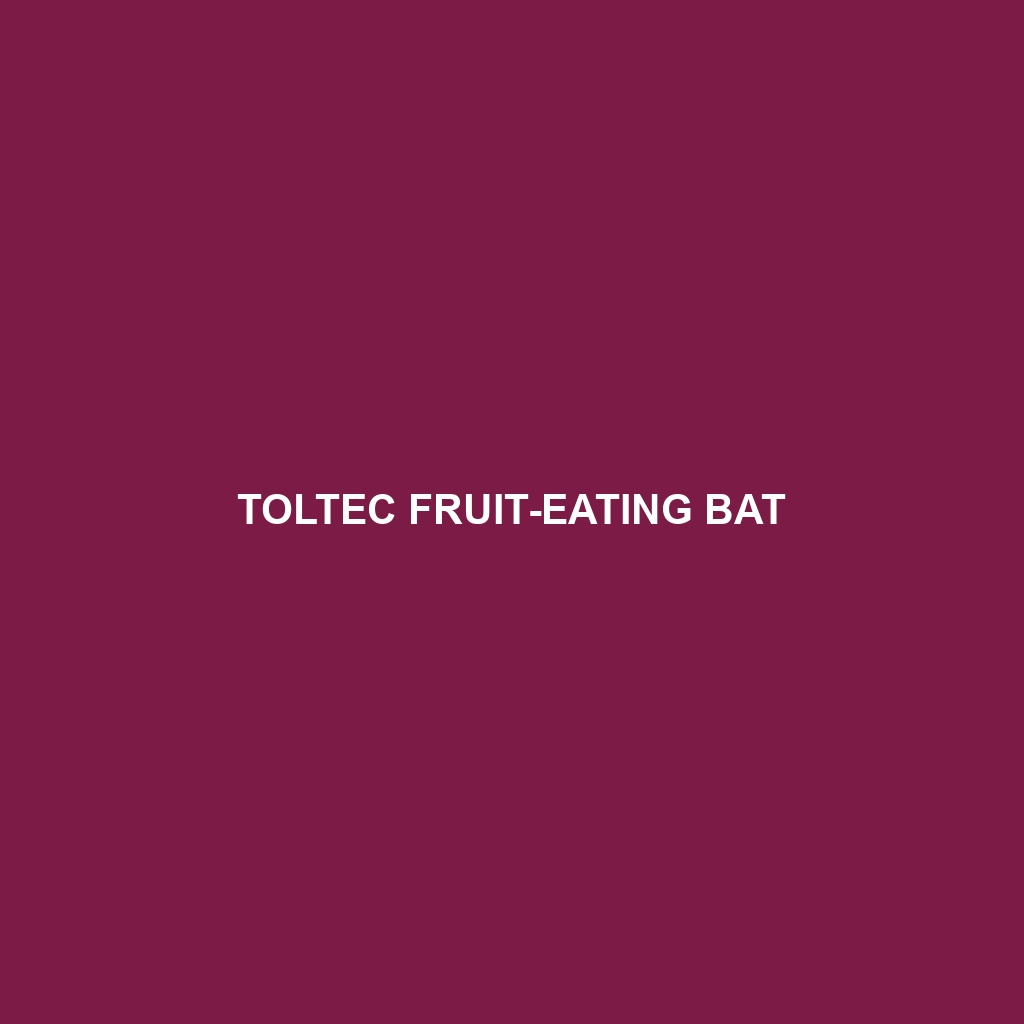Rosenberg’s Fruit-eating Bat
Common Name: Rosenberg’s Fruit-eating Bat
Scientific Name: Artibeus rosenbergi
Habitat
Rosenberg’s Fruit-eating Bat is primarily found in tropical and subtropical forests of Central and South America. Specifically, these bats inhabit regions from southern Mexico through to northern South America, including countries like Colombia, Ecuador, and Brazil. They prefer dense, humid forests, often roosting in tree hollows and caves, making them well-adapted to their lush environment.
Physical Characteristics
The Rosenberg’s Fruit-eating Bat is a medium-sized bat, measuring approximately 9 to 12 cm in body length with a wingspan of about 30 to 35 cm. Its fur is typically short and soft, displaying a rich brown or dark gray color on the back with lighter underparts. One of its distinctive features is its broad, rounded ears and a pronounced noseleaf, which aids in echolocation. These physical attributes not only define their appearance but also enhance their foraging abilities in dense vegetation.
Behavior
Rosenberg’s Fruit-eating Bats are primarily nocturnal, emerging at dusk to feed. They exhibit social behavior when roosting, often forming small colonies. Their foraging habits are fascinating; they are known for their agility in flight, allowing them to navigate through dense foliage. During foraging, they demonstrate a preference for specific fruits, which they locate using their keen sense of smell and echolocation.
Diet
The diet of Rosenberg’s Fruit-eating Bat primarily consists of various fruits, including figs, bananas, and guavas. They play a crucial role in seed dispersal, making them important for forest regeneration. Their feeding habits involve biting into the fruit to consume the pulp while discarding the seeds, helping in the growth of new plants. This frugivore niche contributes significantly to the biodiversity of their habitats.
Reproduction
Breeding typically occurs between May and September, with females giving birth to a single pup after a gestation period of about 3 months. The young bats are nursed for several weeks before they begin to forage independently. Parental care is essential, with mothers often forming crèches, where multiple mothers care for their young simultaneously, enhancing survival rates in communal settings.
Conservation Status
Rosenberg’s Fruit-eating Bat is currently classified as “Vulnerable” according to the IUCN Red List. Habitat loss due to deforestation, agricultural expansion, and urban development poses significant threats to their population. Conservation efforts are crucial to ensure the survival of this species and its habitat.
Interesting Facts
– Rosenberg’s Fruit-eating Bat has been observed to show preferences for certain fruit species, indicating their role in seed selection and ecological balance.
– They are known to roost with other bat species, highlighting their adaptability and social nature in a mixed colony setting.
Role in Ecosystem
Rosenberg’s Fruit-eating Bat plays a pivotal role in its ecosystem as a seed disperser. By consuming fruits and excreting seeds throughout their range, they contribute to the regeneration of forests and the maintenance of plant diversity. Their interactions with flowering plants also help pollinate various species, further underscoring their ecological significance.
